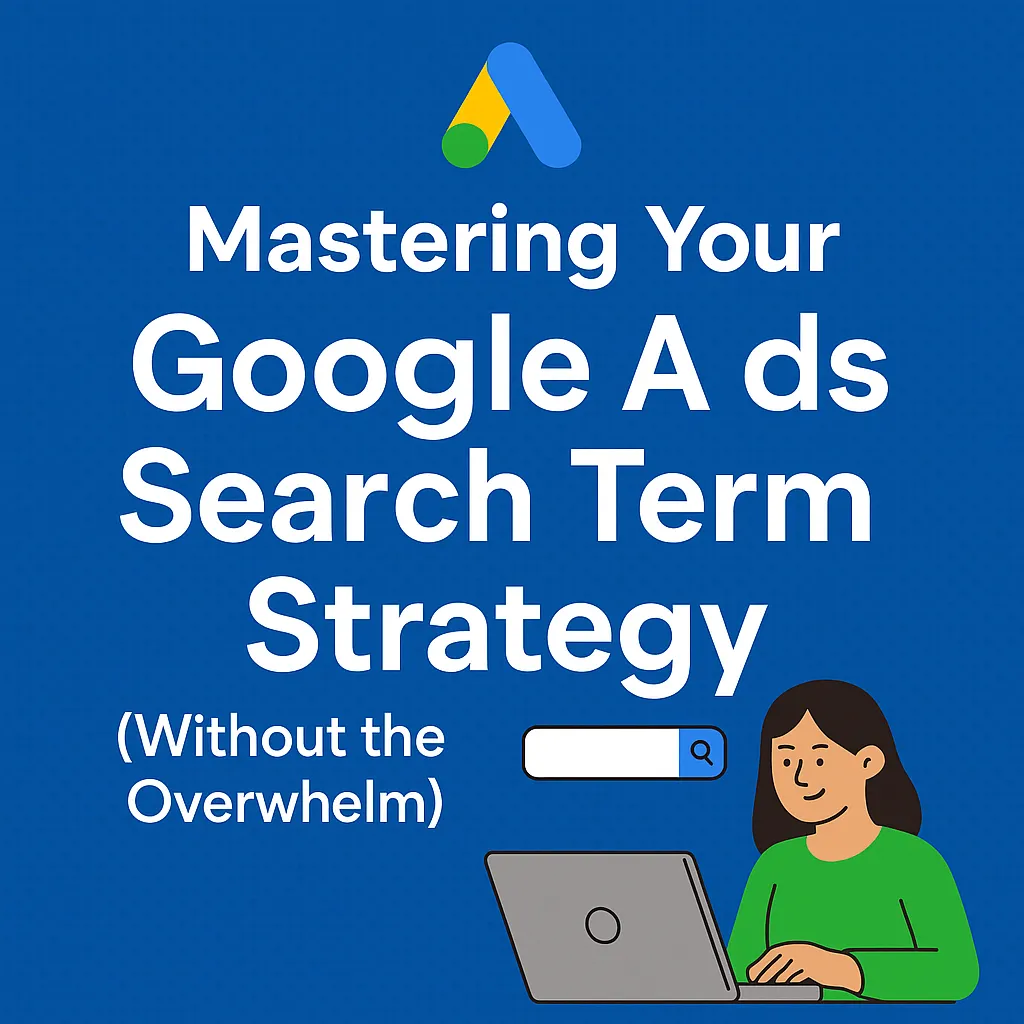Our Blogs
I’m passionate about exploring the ins and outs of Google Ads and ad optimization strategies to share insights that can make a difference. Helping smaller businesses succeed is something I truly care about, and I love offering practical tips and advice whenever I can. My goal is to provide content that’s both helpful and easy to understand, so businesses of all sizes can see real results.

Read Our Newest Posts!

Google Ads Search Term Strategy
Mastering Your Google Ads Search Term Strategy (Without the Overwhelm)
Let’s be real — Google Ads can feel like alphabet soup if you're not in it every day. But understanding how to use search term strategies is one of the fastest ways to stop wasting money and start getting more qualified clicks.
In this post, I’ll walk you through the five main types of search term strategies and when to use each. No jargon. No fluff. Just the real talk you need to make smarter ad decisions.
1. Broad Match — The "Let’s See What Happens" Phase
Think of this as casting a wide net. Google will show your ad to people searching for related terms — even if those terms aren’t an exact match.
💡 Use this when:
You’re just starting out and want to gather data
You need to discover new search terms you may not have thought of
You’re in exploration mode and OK with a little testing
👉 Pro tip: Always pair broad match with a solid negative keyword list. It’s like giving Google bumpers on a bowling lane.
2. Phrase Match — The “Let’s Tighten Things Up” Strategy
This gives you more control than broad match but still offers flexibility. Your ad shows when someone searches for your keyword plus a few words before or after.
💡 Use this when:
You want to narrow your audience but still attract variations
You’ve found terms that convert and want to scale responsibly
You’re refining your targeting without going ultra-specific
3. Exact Match — The "Take My Money" Targeting
This is your precision tool. Your ad will only show for that exact keyword (and close variations).
💡 Use this when:
You’ve got clear data on what’s converting
You want to double down on what’s working
You’re scaling and want to control cost per click tightly
4. Negative Keywords — Your Best Friend
These tell Google what NOT to show your ad for. Most people overlook them. Please don’t be most people.
💡 Use these to:
Prevent wasted ad spend
Keep your traffic clean and intentional
Block irrelevant clicks before they ever happen
5. Dynamic Search Ads (DSAs) — Optional but Mighty
DSAs pull content from your website and match it to relevant search queries automatically.
💡 Use these when:
You have a large site with lots of products or services
You want to catch any gaps in your keyword list
You’re open to Google doing some of the heavy lifting
👉 Note: DSAs should support your campaign — not run the whole show. You still want to layer in controls like negatives and budget caps.
Here’s the Flow I Use With My Clients:
Start broad to collect data.
Add negatives early to reduce wasted spend.
Move top-performing terms to exact match for better ROI.
Layer in phrase match or DSAs depending on the goal.
This sequence helps you go from testing → refining → scaling without blowing your budget on low-intent clicks.
TL;DR?
There’s no one-size-fits-all strategy, but here’s the easiest place to start:
Broad + Negatives → Promote winners to Exact Match
That’s the simplest way to build a Google Ads campaign that actually works for you — not against your wallet.
Need help figuring out what your current setup is missing?
📩 DM me or book a free strategy call and we’ll map it out together.
Book a Call With One of Our Agents Today

Blending Growth with innovation.
Navigation
Contact Us
Call Or Text: (916) 318-0373
© 2022 LN Marketing Services. All Rights Reserved